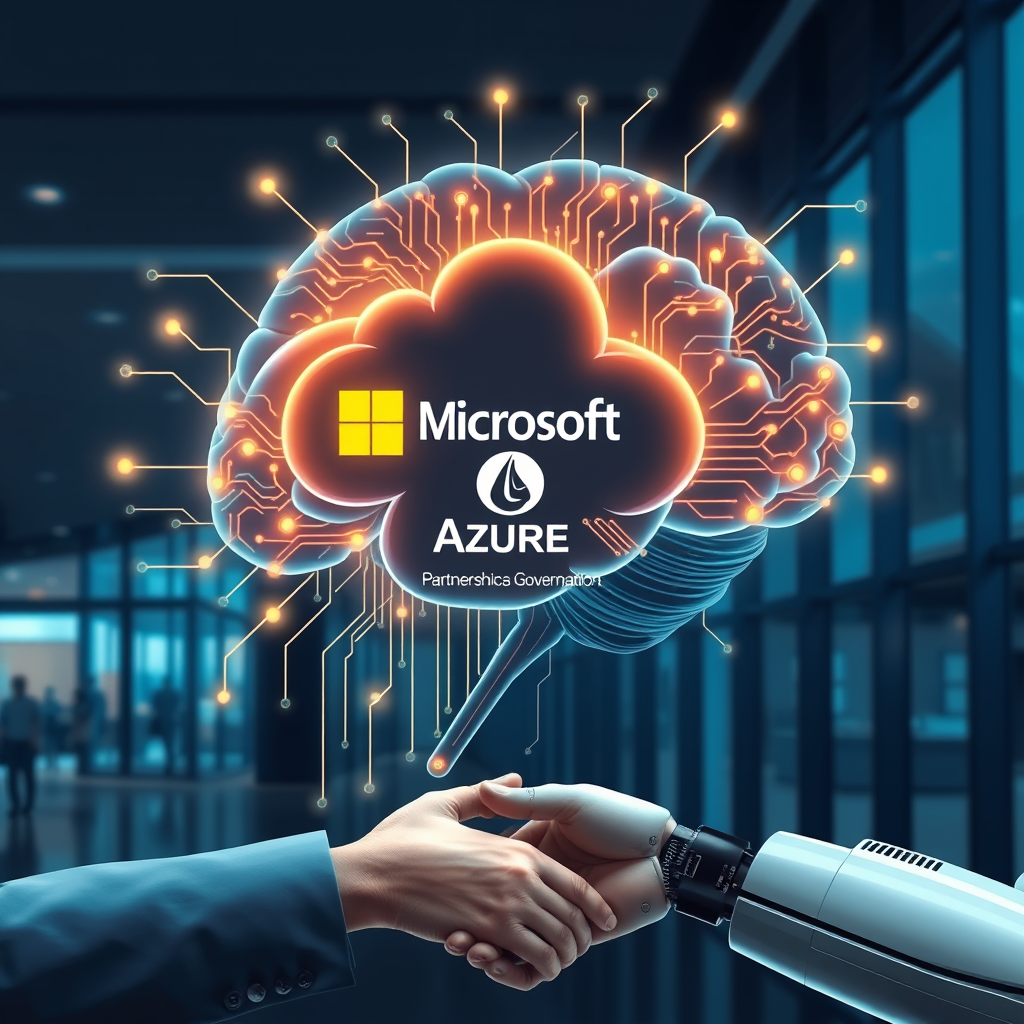
Introduction
OpenAI’s recent announcement marks a pivotal moment in the evolution of one of the most influential artificial‑intelligence organizations in the world. The company has not only completed a sweeping internal reorganisation but has also inked a new definitive partnership agreement with Microsoft, the tech giant that has been a long‑time strategic ally. While the headlines focus on the headlines, the underlying shifts are far more nuanced. The reorganisation seeks to reinforce the nonprofit’s governance over its for‑profit arm, establish the OpenAI Foundation as a global philanthropic powerhouse, and secure a clear equity structure that aligns long‑term incentives. Simultaneously, the partnership with Microsoft is being positioned as the next chapter of a relationship that has already produced cloud infrastructure, joint research, and commercial products such as Azure OpenAI Service. Together, these moves signal a deliberate effort to balance the pursuit of cutting‑edge AI research with responsible stewardship and commercial viability.
The decision to restructure is not merely cosmetic. It reflects a broader industry trend where AI organisations grapple with the tension between open‑source ideals and the capital‑intensive demands of large‑scale model training. By formalising a nonprofit foundation that holds equity in the commercial entity, OpenAI aims to create a governance framework that can safeguard public interest while still attracting the investment necessary to compete with rivals such as Google DeepMind and Anthropic. The partnership with Microsoft, meanwhile, is being framed as a strategic alignment that will allow both entities to pool resources, share risk, and accelerate the deployment of AI solutions across a range of sectors.
In this post we unpack the key elements of the reorganisation, explore how the new Microsoft partnership fits into the broader AI ecosystem, and examine what these developments mean for developers, businesses, and society at large.
The Reorganisation: From Nonprofit to Foundation
OpenAI’s original charter was built around the idea that the organization would act as a steward of artificial general intelligence (AGI) for the benefit of all humanity. Over the years, however, the scale of the company’s operations grew to the point where a hybrid corporate structure became necessary. The new reorganisation introduces the OpenAI Foundation, a nonprofit entity that will own a significant portion of the for‑profit arm, OpenAI, Inc. This structure is designed to preserve the nonprofit’s mission while allowing the commercial unit to operate with the flexibility required to attract venture capital, recruit top talent, and invest in expensive compute resources.
The foundation will hold a majority stake in the for‑profit company, ensuring that decisions about product direction, safety protocols, and research priorities remain aligned with the broader public good. At the same time, the for‑profit arm will retain the ability to generate revenue through licensing, API usage, and enterprise partnerships. This dual‑structure model is reminiscent of the approach taken by other high‑profile tech firms, such as the Wikimedia Foundation’s relationship with its commercial subsidiaries, but it is uniquely tailored to the AI domain where the stakes are higher and the potential for misuse is greater.
One of the most significant implications of this reorganisation is the way it will influence OpenAI’s governance. The foundation will be governed by a board that includes independent experts in AI safety, ethics, and public policy, ensuring that the company’s strategic decisions are scrutinised from multiple perspectives. This board will also have the authority to veto actions that could compromise the organization’s mission, thereby providing a safeguard against short‑term profit motives overriding long‑term societal considerations.
Microsoft’s Role in the New Chapter
Microsoft’s partnership with OpenAI has been evolving since the company first invested $1 billion in 2019. The new definitive agreement expands that relationship in several key ways. First, Microsoft will continue to provide the cloud infrastructure that powers OpenAI’s models, but the agreement now includes deeper integration of Azure’s AI services with OpenAI’s APIs. This integration means that enterprises can access OpenAI’s capabilities through familiar Azure tools, streamlining deployment and reducing the learning curve for developers.
Second, the partnership grants Microsoft an exclusive license to use OpenAI’s models for certain commercial applications. While the exact scope of this exclusivity is not fully disclosed, it is clear that Microsoft will be able to embed OpenAI’s technology into its own product suite, from Office 365 to Dynamics 365, thereby creating a new revenue stream that leverages the strengths of both companies.
Third, the agreement includes a joint research component that will focus on safety, interpretability, and robustness. By pooling resources, the two organisations aim to accelerate the development of safeguards that can mitigate the risks associated with large language models, such as hallucinations, bias, and misuse. This research partnership is particularly important given the growing regulatory scrutiny around AI, as it demonstrates a proactive approach to compliance and ethical deployment.
Finally, the partnership is structured to ensure that OpenAI retains its independence in terms of product development and research direction. Microsoft’s role is primarily to provide infrastructure, market access, and a channel for commercialisation, while OpenAI continues to set the research agenda and maintain control over the core technology.
Implications for AI Development
The reorganisation and partnership have several direct implications for the AI community. For researchers, the establishment of the OpenAI Foundation signals a renewed commitment to open‑source principles. While the commercial arm will continue to develop proprietary models, the foundation’s governance structure is expected to facilitate the release of research papers, datasets, and tools that can be freely accessed by the broader scientific community.
For developers, the deeper integration with Azure means that building AI‑powered applications will become more straightforward. The Azure OpenAI Service already offers a streamlined API that abstracts away many of the complexities associated with model deployment. With the new partnership, developers can expect tighter integration with Azure’s security, compliance, and monitoring tools, making it easier to meet industry standards.
From a business perspective, the partnership offers a compelling value proposition. Companies that rely on Azure for their cloud infrastructure can now tap into OpenAI’s cutting‑edge models without the need to build and maintain their own AI pipelines. This reduces the barrier to entry for AI adoption and accelerates time‑to‑market for innovative products.
On the regulatory front, the joint safety research component is a proactive step that could influence policy discussions. By demonstrating a commitment to responsible AI, OpenAI and Microsoft may set a precedent that encourages other firms to adopt similar governance frameworks, potentially shaping the regulatory landscape in the years to come.
Strategic Benefits for Both Parties
For OpenAI, the partnership with Microsoft provides the financial muscle and infrastructure necessary to scale its operations. The exclusive licensing arrangement ensures a steady revenue stream, while the joint research effort mitigates the risk of falling behind competitors in safety and compliance.
Microsoft, on the other hand, gains access to some of the most advanced language models in the industry, allowing it to differentiate its cloud offerings and embed AI capabilities across its product ecosystem. The partnership also positions Microsoft as a leader in responsible AI, which can enhance its brand reputation and attract customers who are increasingly concerned about data privacy and ethical considerations.
The reorganisation further strengthens OpenAI’s position by ensuring that its nonprofit mission remains at the core of its operations. This alignment could prove advantageous in securing future public funding, grants, and partnerships with academic institutions.
Future Outlook
Looking ahead, the reorganisation and partnership are likely to set the stage for a new era of AI development. The foundation’s governance model may inspire other AI organisations to adopt similar structures, creating a more robust ecosystem that balances innovation with responsibility. At the same time, the partnership with Microsoft could accelerate the deployment of AI across industries, from healthcare to finance, by providing a reliable, scalable, and ethically grounded platform.
However, challenges remain. The rapid pace of AI advancement means that regulatory frameworks will need to evolve in tandem. OpenAI and Microsoft will need to maintain transparency and engage with policymakers to ensure that their innovations do not outpace the safeguards designed to protect society.
Conclusion
OpenAI’s reorganisation and its deepened partnership with Microsoft represent a strategic alignment that balances the pursuit of cutting‑edge AI with a commitment to public good. By establishing the OpenAI Foundation as a nonprofit steward of the for‑profit arm, the company has created a governance structure that can safeguard its mission while still attracting the capital and talent required to stay competitive. The new partnership with Microsoft, meanwhile, offers a powerful combination of infrastructure, commercial reach, and joint research that can accelerate the responsible deployment of AI across the globe.
These developments underscore the importance of thoughtful governance and strategic collaboration in the AI field. As the technology continues to evolve, the lessons learned from OpenAI’s approach may serve as a blueprint for other organisations seeking to navigate the complex intersection of innovation, ethics, and business.
Call to Action
If you’re a developer, entrepreneur, or policy‑maker interested in the future of AI, now is the time to engage with the evolving landscape. Explore the Azure OpenAI Service to prototype new applications, join community forums to stay informed about best practices, and advocate for policies that promote responsible AI. By staying informed and involved, you can help shape a future where artificial intelligence serves humanity’s best interests while driving economic growth and innovation.
